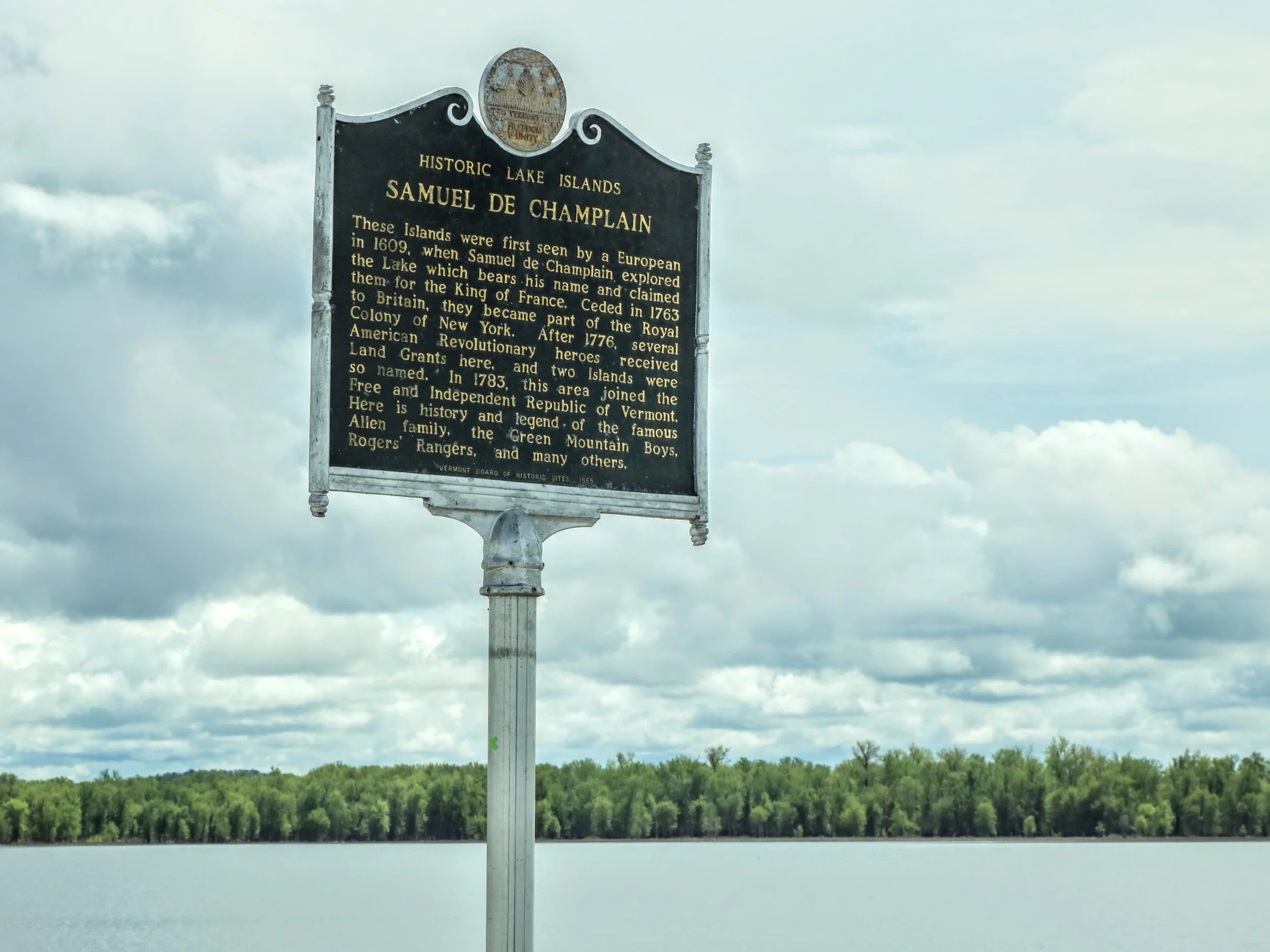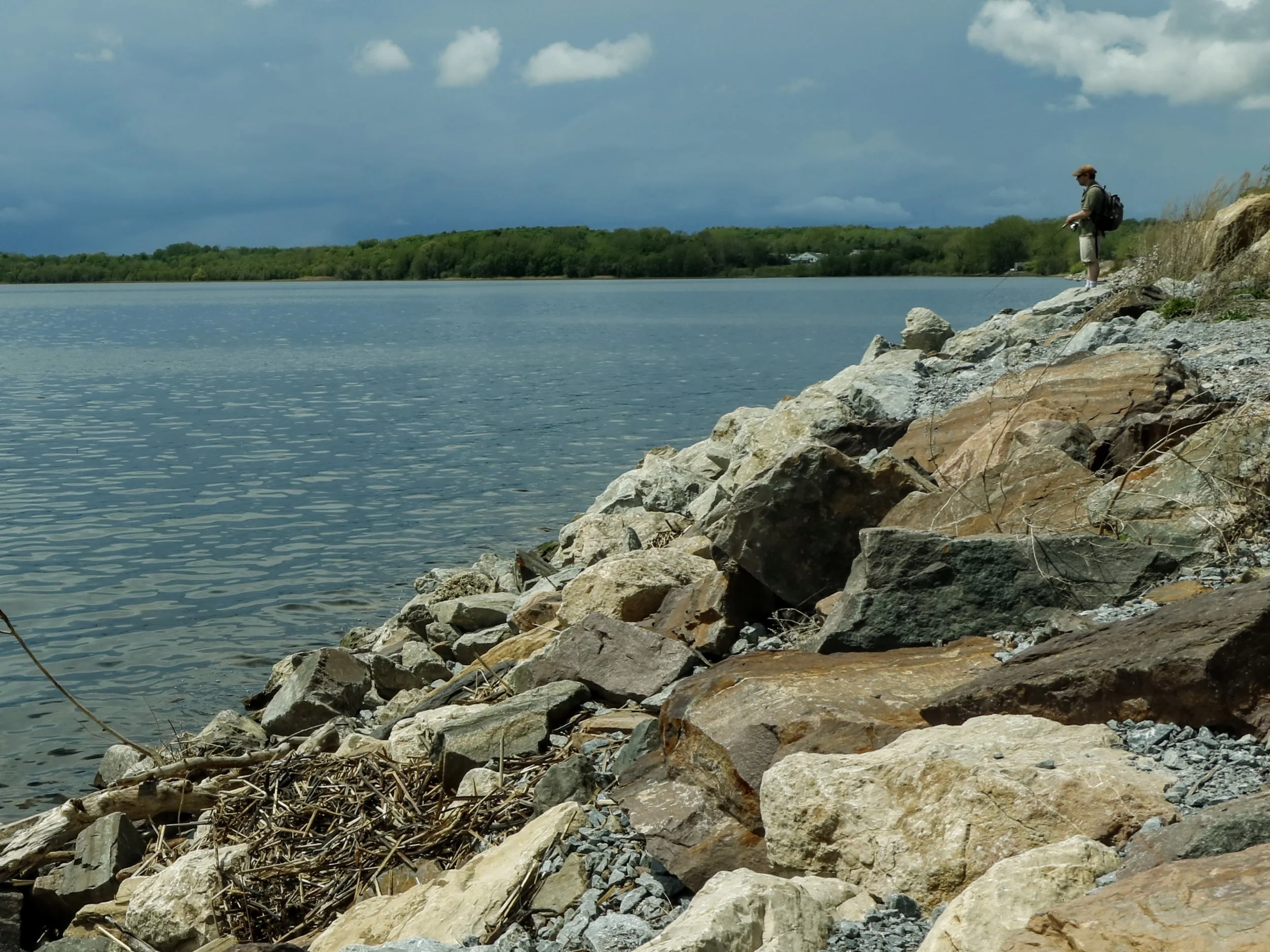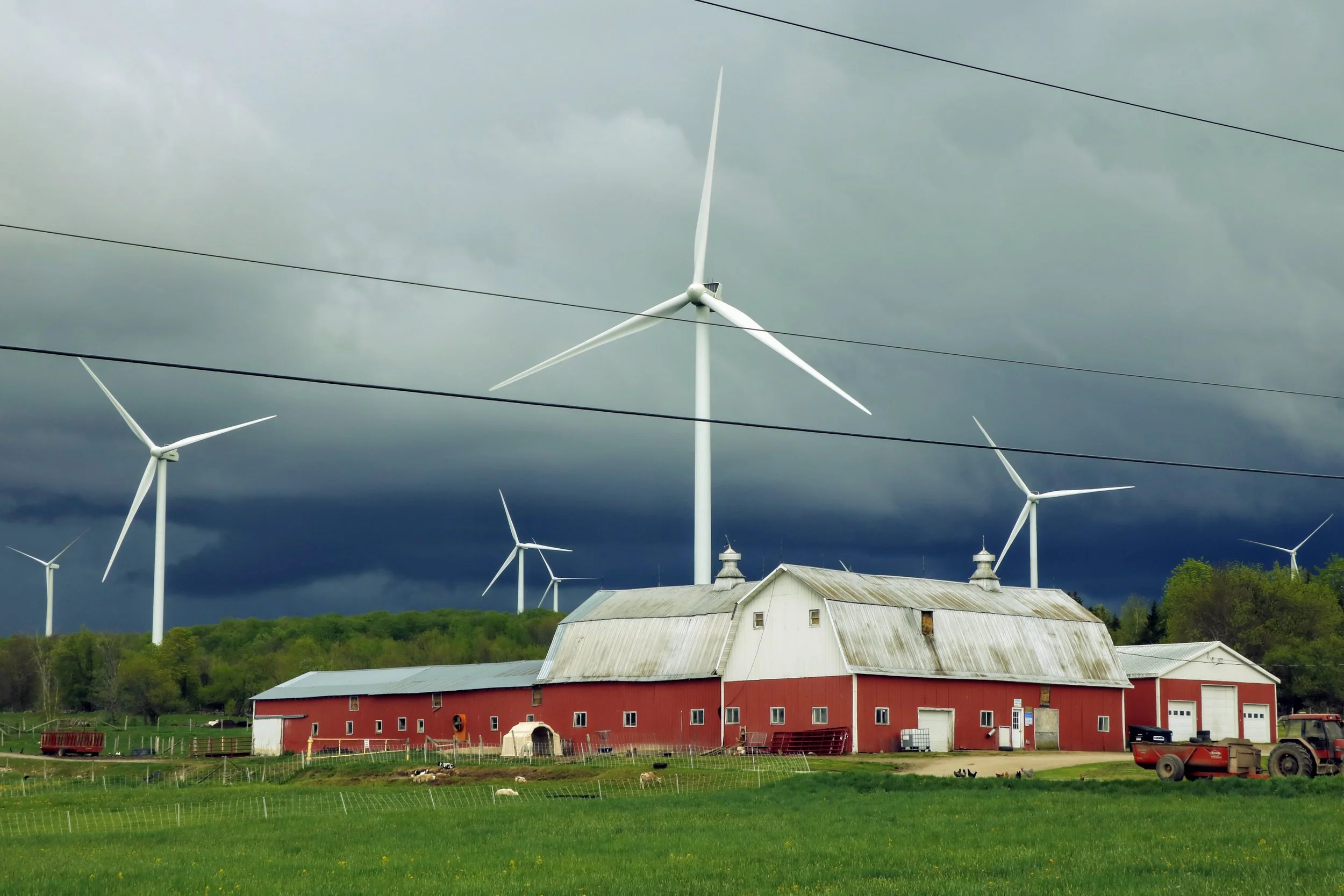LAKE CHAMPLAIN, NEW YORK
ABOVE: The ferry across Lake Champlain from Grand Isle, Vermont to Plattsburgh, New York, on a glorious, windy May day.
Lake Champlain, New York, eerily beautiful and glasslike in May 2022.
Eurocentric Signage
This sign on the shores of Lake Champlain delivers an unabashedly Eurocentric history of the area. Samuel de Champlain explored and mapped what is now Southeastern Canada and the northeastern U.S. on behalf of France. His initial goal was to find the elusive Northwest Passage to Asia and, along the way, establish fur trade with indigenous people. Failing the first goal, he made alliances with and lived among the Wendat (Huron) and Anishinabe (Algonquin) people (in his diary, he referred to them as “savages”). The Wendat and Algonquin persuaded them to assist them in a campaign against the Oneida and Onandaga, and later the Haudenosaunee (Iroquois) people, in their competition for fur trade with the French. Champlain’s role in a Wendat/Anishinabe victory against the Haudenosaunee did indeed increase First Nation’s fur trade with the French.
Champlain’s Diary
As Champlain’s diary shows, his version of his role in the New World was also Eurocentric and self-serving. He notes without irony that the fur trade “has enhanced both society’s lives,” in the same breath announcing that he had “taken over the areas of the St. Lawrence River,” and that “France is now controlling vast territories of North America.” Source: Samuel de Champlain Journal Entries by Rachel Sawah (prezi.com)
In May 2022, Lake Champlain was a stunning glassy mirror, peopled only by this fisherman. Champlain reported that the lake held “a great abundance of fish, of many varieties,” the pike in particular.
A storm was brewing along rural Route 2 between Plattsburgh and Watertown, which boasts both old-school power lines and windmills.











